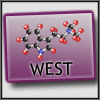
DMT-Nexus member
Posts: 80 Joined: 16-May-2009 Last visit: 29-Jan-2011 Location: Under the Rainbow
|
Lye is becoming more and more difficult to get, so many people have started using easier to acquire (and safer) bases; like sodium carbonate or lime. However, sodium carbonate doesn't seem to be able to raise the pH enough to perform STB, and lime is a very messy substance that doesn't dissolve very well. SWIM was poking around the internet for information on lye and found a way to produce it from sodium carbonate and hydrated lime. The reaction goes like this: Ca(OH)2(aq) + Na2CO3(s) > CaCO3(s) + NaOH(aq) In order to do this, dissolve as much lime in water as you can, then add an excess amount of sodium carbonate. Calcium Carbonate should then precipitate out of solution, while Sodium Hydroxide (lye) remains in solution. Then filter and evaporate the lye water to obtain lye crystals. SWIM got his information and process for this from http://www.scienceforums...m/showthread.php?t=25630Best of luck, Neurorocket. I'm mad as a hatter and a compulsive liar.
Nothing I say is true or should be mistaken for the truth.
|
|
|
|
|

DMT-Nexus member
 
Posts: 4342 Joined: 02-Oct-2008 Last visit: 25-Sep-2025
|
|
|
|

analytical chemist
   
Posts: 7463 Joined: 21-May-2008 Last visit: 09-Aug-2025 Location: the lab
|
it can also be done electrolytically, NaCl in H2O "Nothing is true, everything is permitted." ~ hassan i sabbah
"Experiments are the only means of attaining knowledge at our disposal. The rest is poetry, imagination." -Max Planck
|
|
|

DMT-Nexus member
Posts: 33 Joined: 12-Apr-2009 Last visit: 16-Jul-2013 Location: USA
|
|
|
|

DMT-Nexus member
Posts: 80 Joined: 16-May-2009 Last visit: 29-Jan-2011 Location: Under the Rainbow
|
Benzyme, the problem with electrolysis from NaCl is that it produces Chlorine gas and gas leaks could be a big problem. I'm mad as a hatter and a compulsive liar.
Nothing I say is true or should be mistaken for the truth.
|
|
|

DMT-Nexus member
Posts: 171 Joined: 02-Jun-2009 Last visit: 19-Feb-2011 Location: Sweden
|
neuro_rocket wrote:Benzyme, the problem with electrolysis from NaCl is that it produces Chlorine gas (which can be bubbled through water to create HCl) and gas leaks could be a big problem.
No, that's not it at all. The electrolysis can be done outside or the gas can be lead there or into water. There's a lot of other problems which all people who have tried this is painfully aware of. You need a good power supply, some really nice electrodes, and a lot of trial and error.  The reaction between sodium carbonate and hydrated lime is way easier. Just dump stoichiometric amounts into water, run it through a filter and evaporate. There's a clear difference between what I say I do and what I actually do perform.
|
|
|

tryptamine photographer
Posts: 760 Joined: 01-Jul-2008 Last visit: 14-Jan-2025
|
But it's a slow reaction because of the bad solubility of lime, it needs to be cooked for a long time to complete...
If doing electrolysis, the compartments of cathode and anode must be separated to prevent formation of bleach and/or chlorate. Chlorine reacts with lye! And btw, you don't get HCl when bubbling it through water.
|
|
|

DMT-Nexus member
Posts: 80 Joined: 16-May-2009 Last visit: 29-Jan-2011 Location: Under the Rainbow
|
Actually, this reaction is pretty fast. SWIM did it recently by dissolving 1 tsp of lime and 1 tsp of Sodium Carbonate in about 400 ml of water. The Calcium Carbonate began to precipitate immediately and SWIM decanted off the lye water, which had a pH of 13. (SWIM tried filtering out the precipitate but the lye ate through his filters). SWIM is going to use the water as is, but he could probably evaporate it to yield lye crystals (not sure about this). I'm mad as a hatter and a compulsive liar.
Nothing I say is true or should be mistaken for the truth.
|
|
|

DMT-Nexus member

Posts: 689 Joined: 22-Feb-2009 Last visit: 02-Apr-2025 Location: Oaxaca
|
Damn dude! Great procedure! -Eternally Romping the Astral Savannahlands-
|
|
|
DMT-Nexus member
Posts: 48 Joined: 03-Sep-2009 Last visit: 30-Sep-2011
|
neuro_rocket wrote:Actually, this reaction is pretty fast.
SWIM did it recently by dissolving 1 tsp of lime and 1 tsp of Sodium Carbonate in about 400 ml of water. The Calcium Carbonate began to precipitate immediately and SWIM decanted off the lye water, which had a pH of 13. (SWIM tried filtering out the precipitate but the lye ate through his filters).
SWIM is going to use the water as is, but he could probably evaporate it to yield lye crystals (not sure about this). Use a plastic filter. Not sure the chemical composition, but the funnels you can pick up at your local homebrew shop will have screens in them. These funnels are acid and base safe. The screen will remove the bulk of your precipitate.
|
|
|

DMT-Nexus member

Posts: 1689 Joined: 18-Jan-2008 Last visit: 18-Apr-2015
|
SanMan wrote:That sure sounds like a whole lot of trouble when you could have a friend order 2 lbs.
Sanman: Nice avatar  shoe
ॐ भूर्भुव: स्व: तत्सवितुर्वरेण्यं । भर्गो देवस्य धीमहि, धीयो यो न: प्रचोदयात्
Love, Gratittude, Compassion, Fearlessness!
|
|
|

illudium Q-36
Posts: 861 Joined: 09-Jul-2009 Last visit: 28-Nov-2024 Location: uranus
|
For the time being, lye is easily obtainable. But it is nice to know that there is a relatively low hassle procedure like this. Thank you All posts written by Madcap should be regarded as fiction.
|
|
|

DMT-Nexus member
Posts: 316 Joined: 13-Apr-2009 Last visit: 28-May-2012
|
How to easily make sodium hydroxide
Here's how: put two bowls side by side fill each one with a super-saturated salt solution(NaCl).
Use rock salt(any pharmacy)cause table salt is iodized.
Bridge the two bowls with a rag or towel that's wet with the same saturated solution(to cunduct electricity from one bowl to the other)put the positive of a car battery charger with carbon or graphite rod connected to it in one bowl and the negative also with carbon or graphite rod in the other one.
Power up,you'll see bubbles coming off the carbon rods.I don't remember if it's the positive or the negative,but one of the two is chlorine gas(very toxic so do this outdoors) that's the salt losing the chlorine atoms and they're being replaced by oxygen and hydrogen(OH) that are binding to the sodium giving you NaOH and what was a salt solution is now a lye solution.
evap it and collect your lye crystals .
Leave the power on till no more bubbles come off the rods by the way.It's as easy as that
Pasted from <http://www.dmt-nexus.me/forum/default.aspx?g=posts&t=1751>
|
|
|

Someone called the wolf ?
Posts: 9 Joined: 19-Jun-2009 Last visit: 22-May-2021 Location: The jungle baby ! Yeah !
|
For the perfectionists out there, here's a little correction to the above formula. Quote:The reaction goes like this: Ca(OH)2(aq) + Na2CO3(s) > CaCO3(s) + NaOH(aq) In reality; it should read: Ca(OH)2(aq) + Na2CO3(s) > CaCO3(s) + *2* NaOH(aq) While we're at it, it's also a less extenuating way of producing one's own calcium carbonate. Sure beats blowing air through a straw for 30 minutes to produce a gram of CaCO3 !  The other cool thing (thank lord!) about this procedure, is you can reuse the water in a cycle fashion to increase the NaOH content before evapping. Just filter out the CaCO3, add some more CaOH, and keep doing it until you've exhausted the Na2CO3 in solution. The low solubility of both calcium components makes this a painstaking process. On the other hand, the high solubility of NaOH allows this little shortcut. I didn't believe my eyes when I saw this quite simple procedure last nite, but I double-checked it in a reaction database and it's definitely a go. ( http://www.chemthes.com/rxn_dp.php?id=1724) The only thing that worries me now; how do you get to scrape that evap dish without burning your clothes ?  Methinks I'm keeping this one in solution. Hint; I wouldn't blow air in the resulting solution to precipitate the leftover CaOH, it'll just turn the NaOH back to Na2CO3 + H20.
|